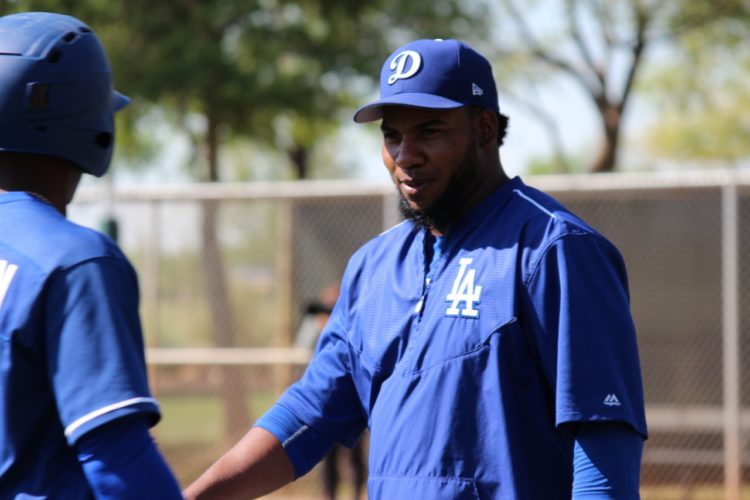
I feel like we’ve written a lot about Pedro Baez on this site. It has come in different forms and in different situations (i.e., not just me crapping on him), but the result is always the same: He’s just not that good. That might be a little harsh, but he’s not nearly as good as folks would have you think.
That was on display in Atlanta last night, as he gave up the eventual game-winning home run to Tyler Flowers. In Baez’s defense, it didn’t look like a home run off the bat and was the first home run he had allowed on a non-fastball, but it still ended up in a Dodger defeat. The more troubling part was the fact he walked Johan Camargo with two outs ahead of Flowers. Despite Camargo’s homer off Josh Ravin on Tuesday, he isn’t a power hitter. That was (on five pitches) inexcusable and part of what makes Baez such an enigma.
But folks have been lulled into a false sense of security with Baez this season. Before last night, he has shiny 1.41 ERA. That’s damn good, but when it’s accompanied by a 3.55 FIP, that’s not a good sign. After the homer last night, Baez now has a still-good 1.77 ERA, but an increasingly ugly 3.85 FIP. His ERA-FIP spread is the worst in baseball among relief pitchers with 40 or more innings pitched. It puts him in the company of Cory Gearrin, Mike Montgomery and Ryan Buchter — not exactly Kenley Jansen, Craig Kimbrel and Tommy Kahnle.
That means he has been over-performing, and it’s thanks in large part to a 94.6 strand rate, which is 3rd-best among qualified relievers. His career-best LOB% before 2017 was 83.3 in his first season (2014, 24 IP), so this isn’t a skill he’s shown before. If the season ended today, it would be the 9th-highest number of its kind in the last 30 years. Baez isn’t that good a pitcher. His expected FIP told us this was coming, as he had a 4.42 xFIP before last night, meaning he had been getting a bit lucky with balls in play (.246 BABIP).
What might be even more concerning about Baez is the fact his strikeouts have decreased significantly this season. His strikeout percentage is down to 22.1 percent. That’s still solid, but it’s not as good consider he was at 28.9 and 28.1 in 2015 and ’16, respectively. Oh, and he’s walking more hitters — 9 percent, a career-worst by a point and a half. Oddly enough, his swinging strike rate is up by 1.3 percent from last season and is among the best among relief pitchers.
Might as well call him Edward E. Nigma.
——
Admittedly, last night’s performance led directly to this article being written. But, the advanced metrics showed there was regression incoming for Baez, and it hit pretty hard last night. Maybe Dave Roberts was giving him a test to see if Baez had turned a corner (facing the bottom-third of a pesky #Barves lineup in a high-leverage situation), but it looks like the same ol’ Petey Bad.
And something must be said for the fact he’s a converted third baseman and has only been pitching full-time since 2013, but at some point, folks have to stop getting fooled by Baez. We (as a fan base) need to stop trying to make him something he’s not and stop expecting him to be something he isn’t. That is, until he proves he’s changed. But I’m not expecting that day to come.
 Dodgers Digest Los Angeles Dodgers Baseball Blog
Dodgers Digest Los Angeles Dodgers Baseball Blog